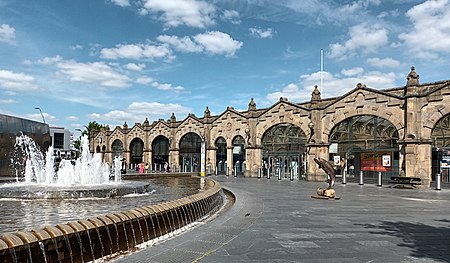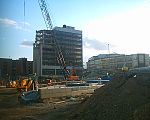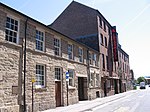Sheffield station
1870 establishments in EnglandCharles Trubshaw railway stationsDfT Category B stationsFormer Midland Railway stationsGrade II listed buildings in Sheffield ... and 11 more
Incomplete lists from September 2017John Holloway Sanders railway stationsNorthern franchise railway stationsPages with no open date in Infobox stationRailway stations in Great Britain opened in 1870Railway stations in SheffieldRailway stations served by CrossCountryRailway stations served by East Midlands RailwayRailway stations served by TransPennine ExpressSheffield Supertram stopsUse British English from March 2015

Sheffield station, formerly Pond Street and later Sheffield Midland, is a combined railway station and tram stop in Sheffield, England; it is the busiest station in South Yorkshire. Adjacent is Sheffield station/Sheffield Hallam University Sheffield Supertram stop. In 2017–18, the station was the 43rd-busiest in the UK and the 15th-busiest outside London.
Excerpt from the Wikipedia article Sheffield station (License: CC BY-SA 3.0, Authors, Images).Sheffield station
Granville Street, Sheffield Park Hill
Geographical coordinates (GPS) Address Nearby Places Show on map
Geographical coordinates (GPS)
| Latitude | Longitude |
|---|---|
| N 53.378 ° | E -1.462 ° |
Address
Sheffield
Granville Street
S1 2BP Sheffield, Park Hill
England, United Kingdom
Open on Google Maps











